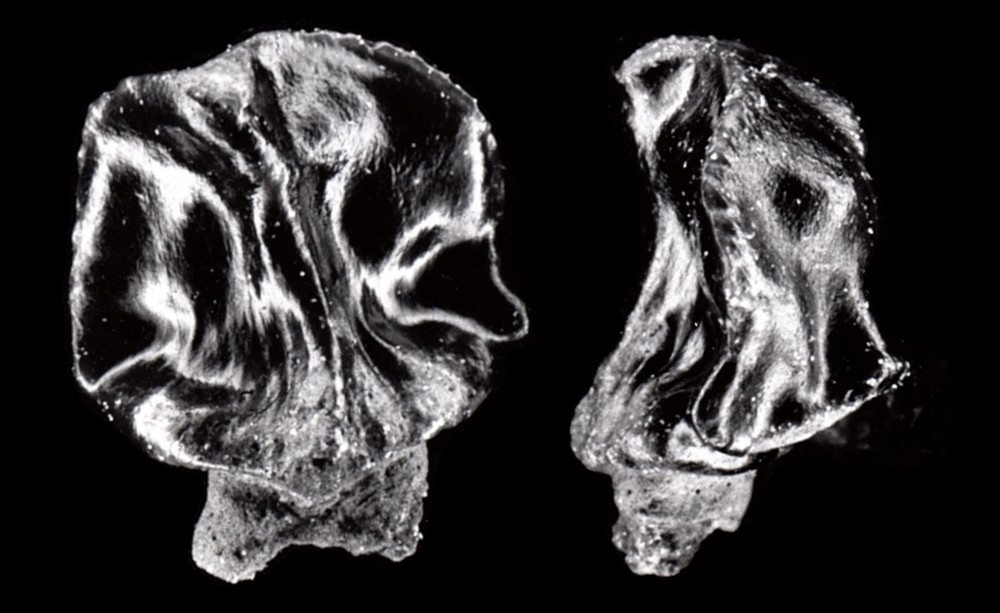Viperecucullus kuehnei
Case, 1996
Classification: Elasmobranchii Myliobatiformes Dasyatidae
Reference of the original description
A new selachian fauna from the Lower Hornestown Formation (Early Paleocene/Montian) of Monmouth County, New Jersey. Palaeontographica, Abt. A, 242(1–3), 1–14
A new selachian fauna from the Lower Hornestown Formation (Early Paleocene/Montian) of Monmouth County, New Jersey. Palaeontographica, Abt. A, 242(1–3), 1–14
Types
Viperecucullus kuehnei
Holotype: AMNH(fossil): 14593; AMNH(fossil): 14593; Paratype: AMNH(fossil): 14588; AMNH(fossil): 14589; AMNH(fossil): 14590; AMNH(fossil): 14591; AMNH(fossil): 14592; AMNH(fossil): 14588; AMNH(fossil): 14589; AMNH(fossil): 14590; AMNH(fossil): 14591;
Viperecucullus kuehnei
Holotype: AMNH(fossil): 14593; AMNH(fossil): 14593; Paratype: AMNH(fossil): 14588; AMNH(fossil): 14589; AMNH(fossil): 14590; AMNH(fossil): 14591; AMNH(fossil): 14592; AMNH(fossil): 14588; AMNH(fossil): 14589; AMNH(fossil): 14590; AMNH(fossil): 14591;
Description:
Citation: Viperecucullus kuehnei Case, 1996: In: Database of fossil elasmobranch teeth www.shark-references.com, World Wide Web electronic publication, Version 12/2025
Please send your images of "Viperecucullus kuehnei" to info@shark-references.com

Viperecucullus kuehnei Case, 1996 Holotype, AMNH 12188 © G. Case

Viperecucullus kuehnei Case, 1996 Holotype, AMNH 12188 © G. Case
Distribution Geographic
"Deep Run" or Hackamee Creek, Cream Ridge, Monmouth County, New Jersey [397]
"Deep Run" or Hackamee Creek, Cream Ridge, Monmouth County, New Jersey [397]
Description
Diagnosis after CASE, 1996 [397]: Small dasyatid teeth averaging 2 to 4 mm in height, having a most distinctive crown design, hood-like in appearance, similar to the crowns of Manta melanyae CASE (CASE, 1980), a mobulid ray. The crown is made up of a series of folds, depressions, and coarse indentations; the bi-lobed root design (holaulacorhize) is typically batoid, and this new genus does not belong to the Mobuiidae.
Diagnosis after CASE, 1996 [397]: Small dasyatid teeth averaging 2 to 4 mm in height, having a most distinctive crown design, hood-like in appearance, similar to the crowns of Manta melanyae CASE (CASE, 1980), a mobulid ray. The crown is made up of a series of folds, depressions, and coarse indentations; the bi-lobed root design (holaulacorhize) is typically batoid, and this new genus does not belong to the Mobuiidae.
Remarks
shark-references Species-ID=7498;
type species of Viperecucullus Case, 1996 p. 9 [397] by original designation (Art. 68.2 ICZN);
valid after Case (1996) p. 9 [397];
shark-references Species-ID=7498;
type species of Viperecucullus Case, 1996 p. 9 [397] by original designation (Art. 68.2 ICZN);
valid after Case (1996) p. 9 [397];
References

Global impact and selectivity of the Cretaceous-Paleogene mass extinction among sharks, skates, and rays. Science, 379, 802–806
DOI: 10.1126/science.abn2080

A new selachian fauna from the Lower Hornestown Formation (Early Paleocene/Montian) of Monmouth County, New Jersey. Palaeontographica, Abt. A, 242(1–3), 1–14

Global impact and selectivity of the Cretaceous-Paleogene mass extinction among sharks, skates, and rays. Science, 379, 802–806
DOI: 10.1126/science.abn2080

A new selachian fauna from the Lower Hornestown Formation (Early Paleocene/Montian) of Monmouth County, New Jersey. Palaeontographica, Abt. A, 242(1–3), 1–14
















